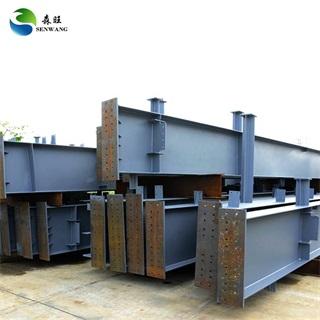
There are three types of connection methods for steel structures: weld connection, bolt connection and rivet connection.
(1) Weld connectionThe welding seam connection is the partial melting of the welding rod and the weldment by the heat generated by the arc, and the welding is condensed into a weld by cooling, thereby connecting the weldment into a whole.
Advantages: does not weaken the section of the component, saves steel, simple structure, convenient manufacturing, large connection rigidity, good sealing performance, easy to use automated operations under certain conditions, and high production efficiency.
Disadvantages: The heat-affected zone formed by the welding high temperature of the steel near the welding seam may be that some parts of the material become brittle; the steel is subjected to unevenly distributed high temperature and cooling during the welding process, which causes the structure to produce welding residual stress and residual deformation, which is harmful to the structure. Bearing capacity, rigidity and performance have a certain influence; due to the high rigidity of the welded structure, once local cracks occur, it is easy to extend to the whole, especially at low temperatures, which is prone to brittle fracture; the plasticity and toughness of the weld connection are poor, and when welding Defects may occur, reducing fatigue strength.
(2) Bolt connectionBolt connection is the connection of connecting pieces into a whole through bolts, which are fasteners. There are two types of bolt connection: ordinary bolt connection and high-strength bolt connection.
Advantages: simple construction process, convenient installation, especially suitable for site installation and connection, but also easy to disassemble, suitable for structures that need to be assembled and disassembled and temporary connections.
Disadvantages: It is necessary to make holes on the plate and to align the holes when assembling, which increases the manufacturing workload and requires high manufacturing precision; bolt holes also weaken the section of the component, and the connected parts often need to overlap each other or add auxiliary connections Plate (or angle steel), so the structure is more complicated and expensive steel.
(3),rivet connectionThe rivet connection is a rivet with a semicircular prefabricated nail head at one end, the nail rod is burned red and quickly inserted into the nail hole of the connector, and then the other end is also riveted into a nail head with a rivet gun to make the connection tight solid.
Advantages: The riveting force is reliable, the plasticity and toughness are good, and the quality is easy to check and guarantee. It can be used for heavy-duty and direct dynamic load structures.
Disadvantages: The riveting process is complicated, the manufacturing costs labor and materials, and the labor intensity is high, so it has been basically replaced by welding and high-strength bolting.